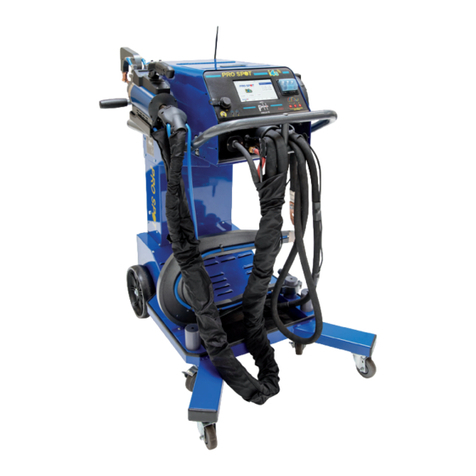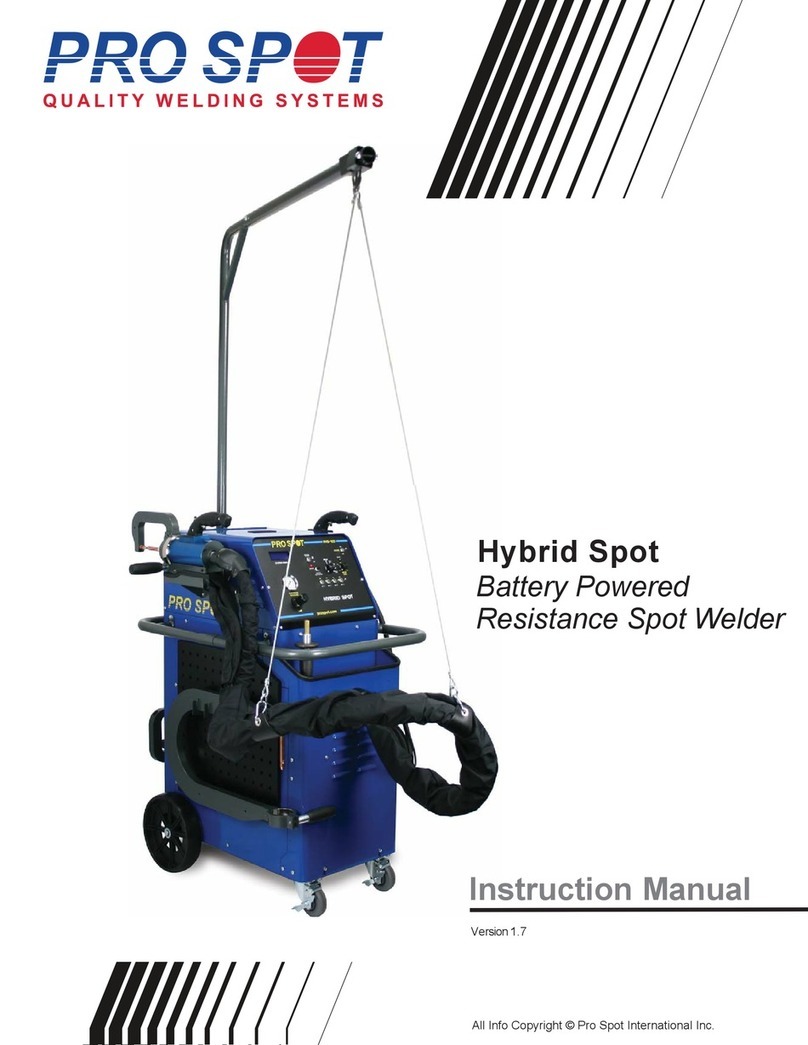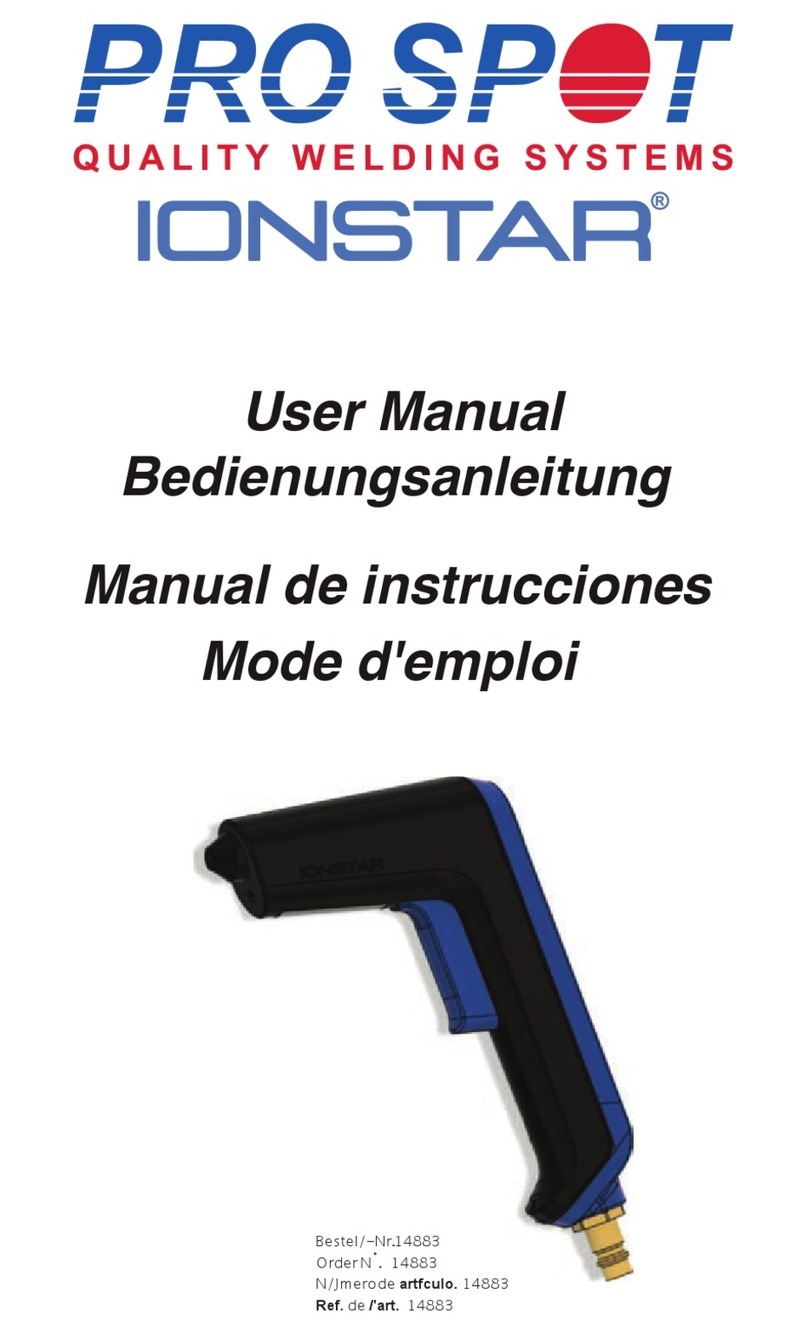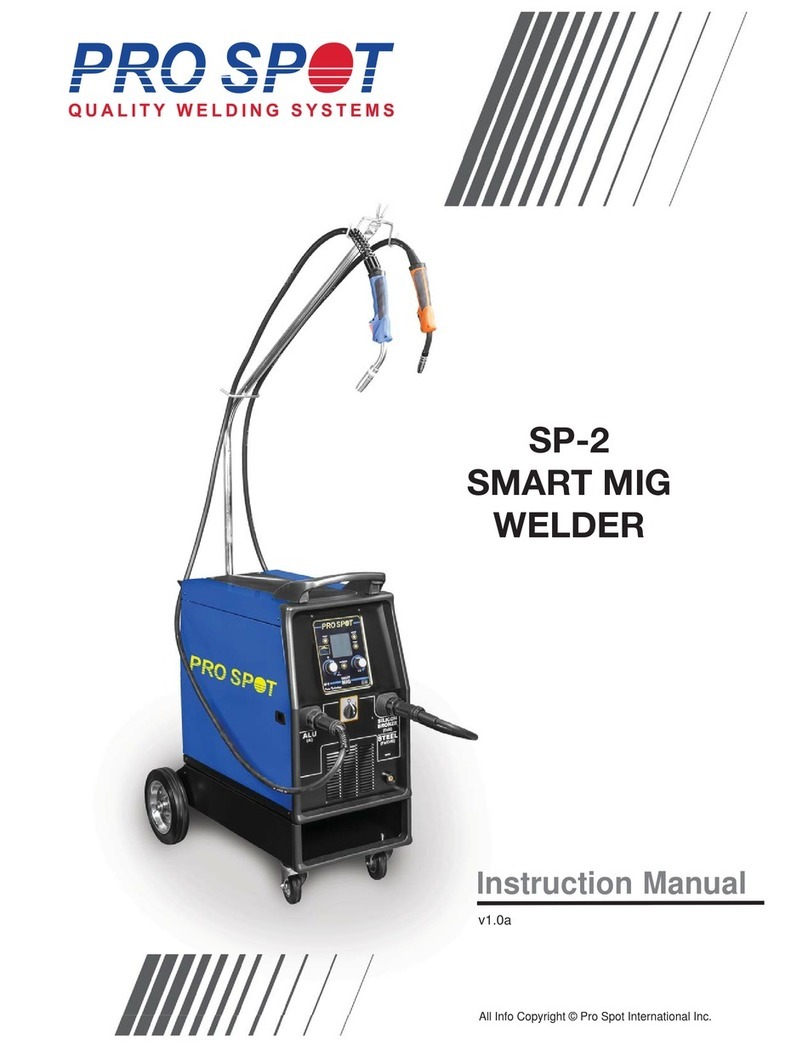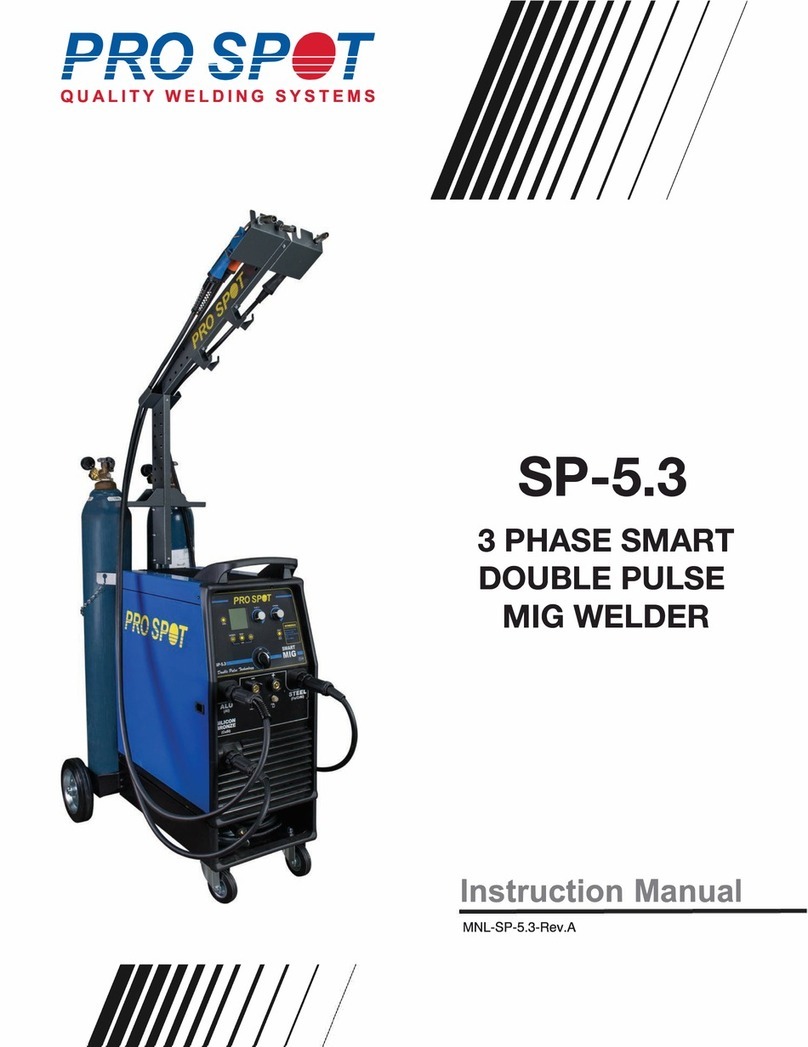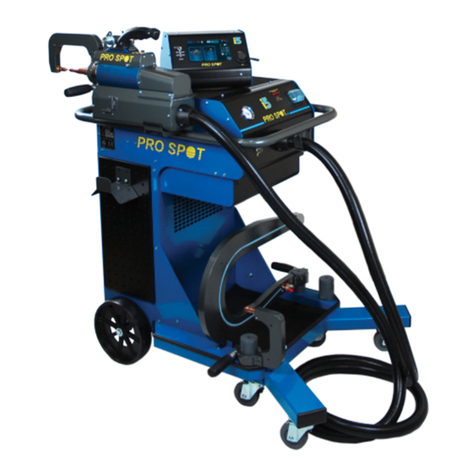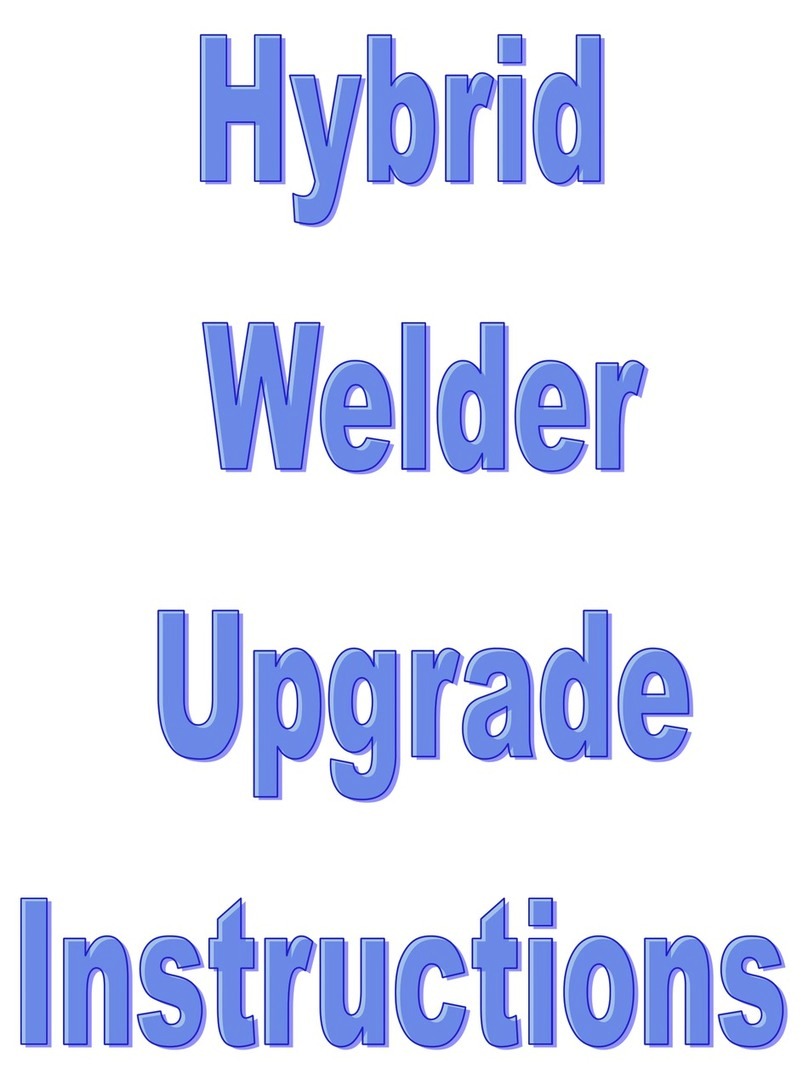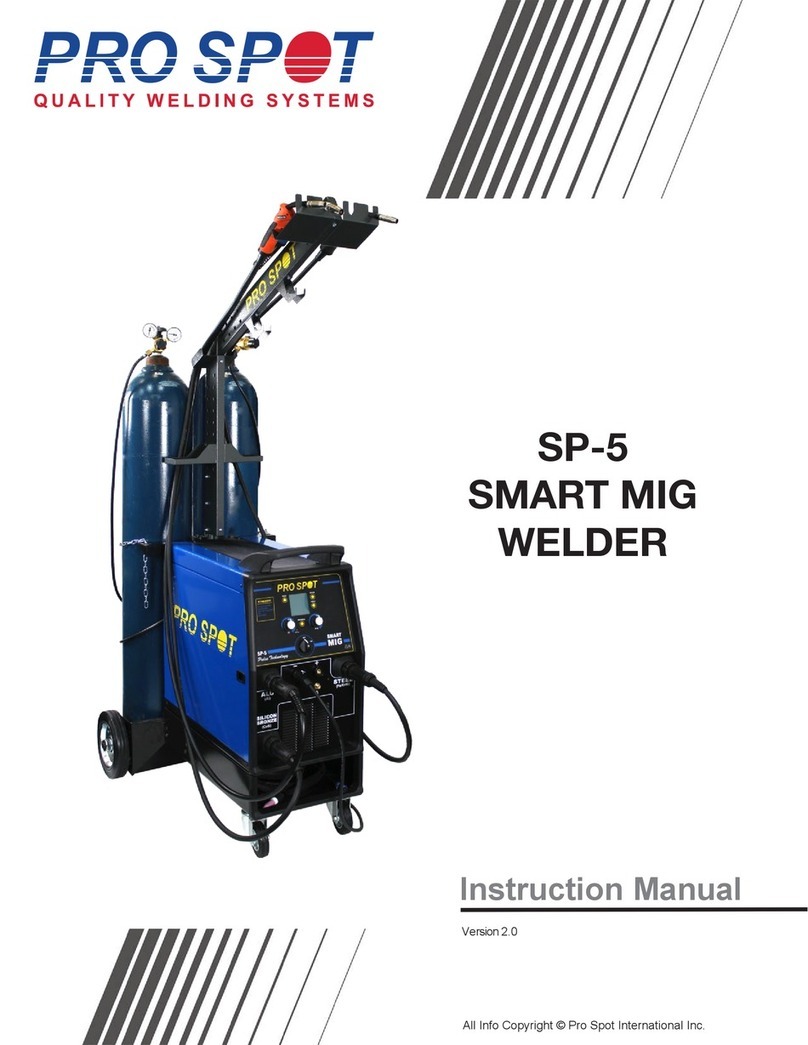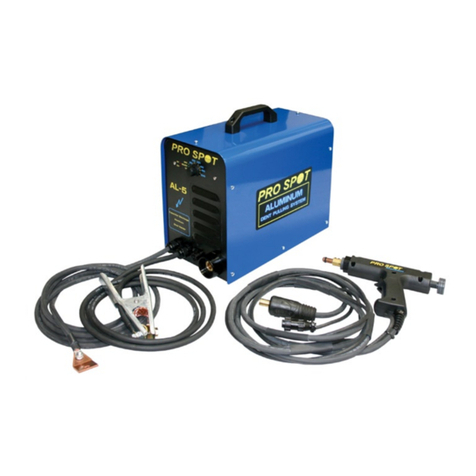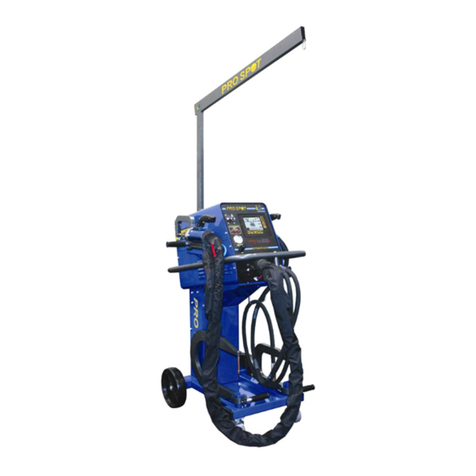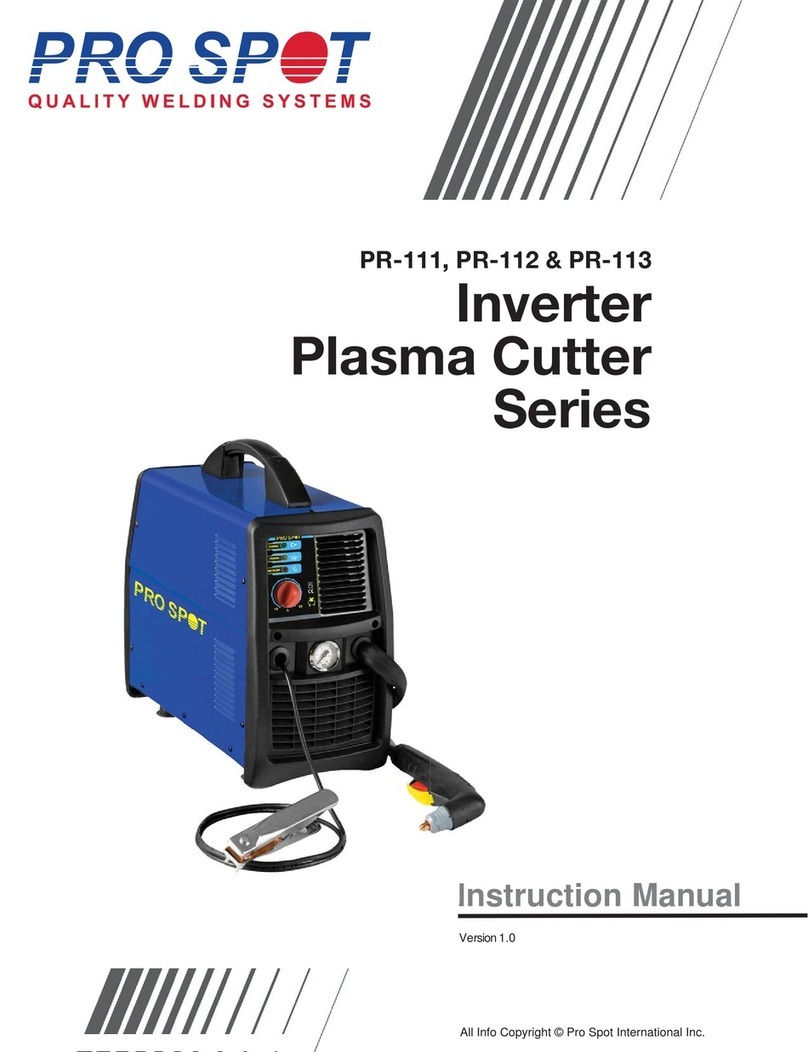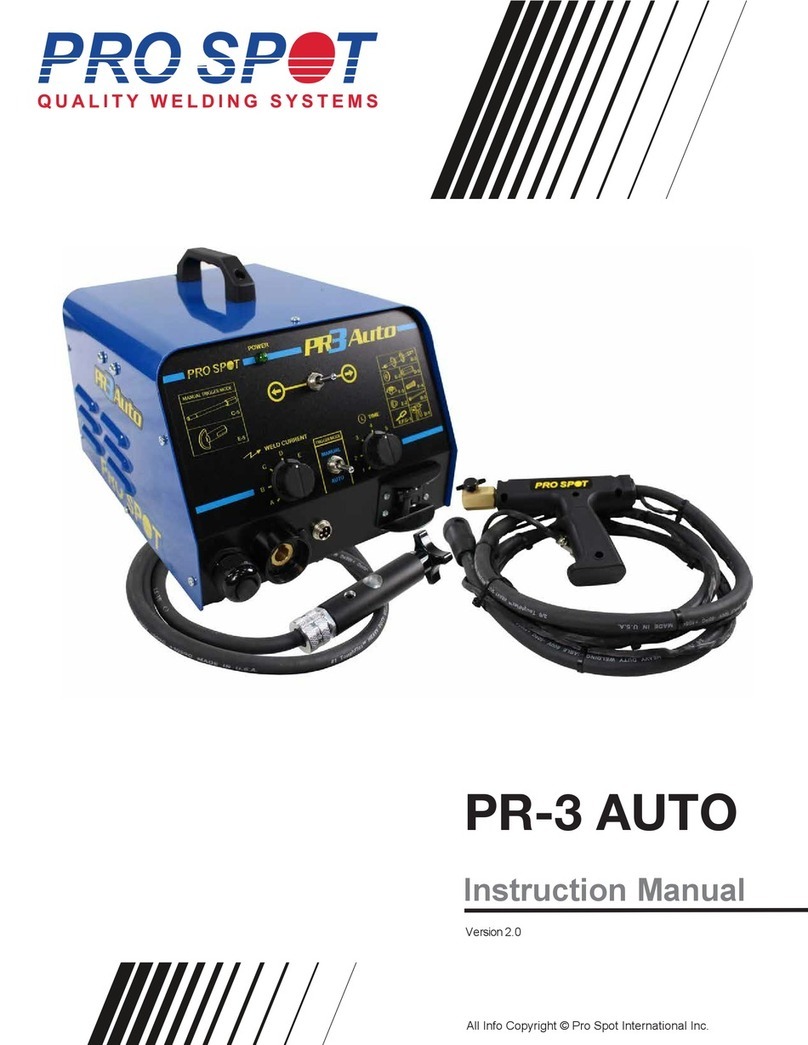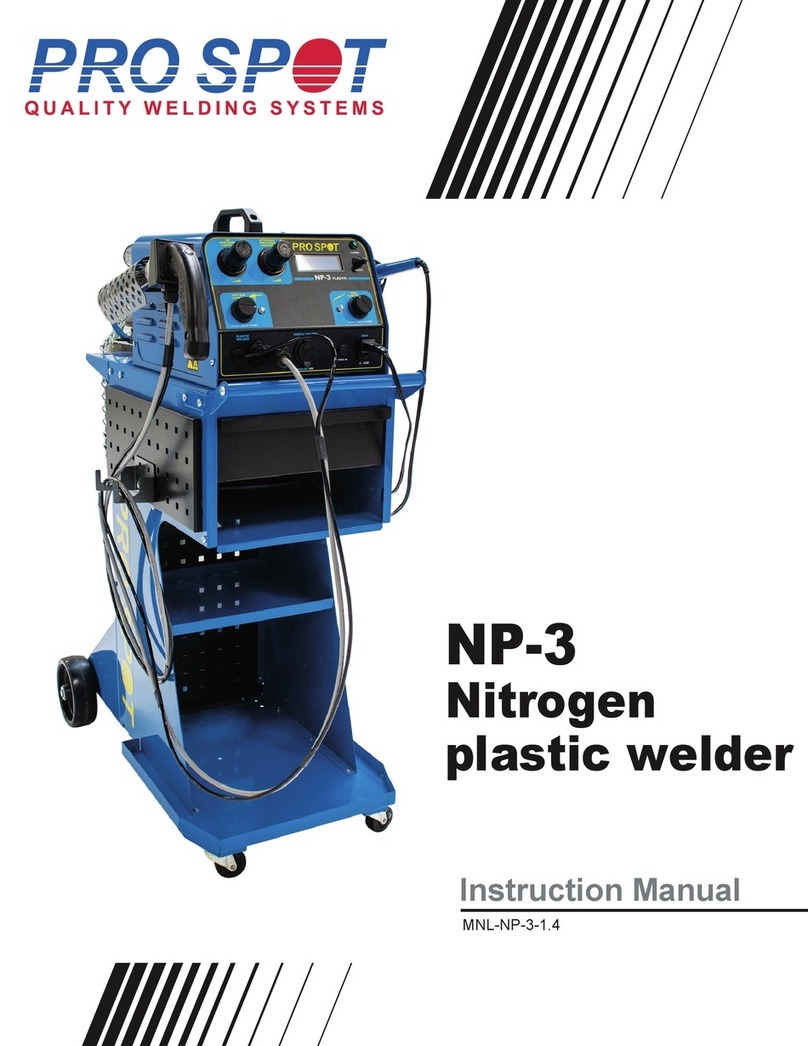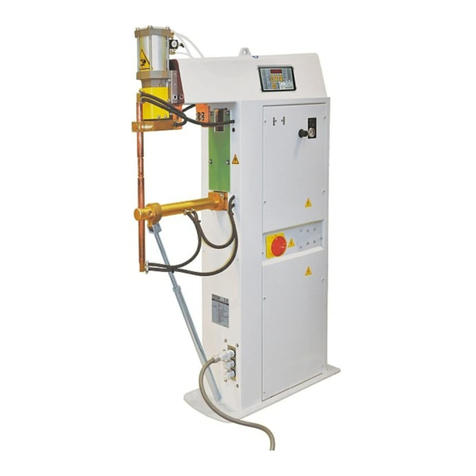
Copyright © Pro Spot International, Inc. 2005-2009
The PR-2000 Spot welder is used by body shops to
duplicate the welding procedure used by the car manu-
facturers. Use of the equipment that is contrary to the
instructions in this manual can cause personal injury
and/or machine damage.
Pro Spot International, Inc. can in no way be held
responsible for intentional or unintentional damage, and
consequent unlimited loss of profit, loss of income, loss
of business opportunity, loss of use, etc. that originates
from incorrect use of this equipment ir its use in a man-
ner not intended.
Warranty
Pro Spot International, Inc. offers a two-year guarantee
from the date of delivery of the new welder. This guar-
antee covers material defects and assumes normal care
and maintenance.
The guarantee assumes that:
• the equipment is correctly installed and inspected
• the equipment has not been altered or rebuilt without
approval from Pro Spot International, Inc.
• genuine Pro Spot International, Inc. spare parts are
used to make repairs.
• operation and maintenance has been carried out
according to the instructions in this manual.
All claims on warranty must verify that the fault has
occurred within the guarantee period, and that the unit
has been used within its operating range as stated in
the specifications. All claims must include the product
type and serial number. This data is stamped on the
name plate.
Note: This instruction manual provides advice as well
as instructions for installation, operation, maintenance
and troubleshooting.
IMPORTANT! Read this manual carefully to
become familiar with the proper operation of
the welder. Do not neglect to do this as
improper handling may result in personal
injury and damage to the equipment.
The drawings in this manual are presented for illustra-
tive purposes only and do not necessarily show the
design of the equipment available on the market at any
given time. The equipment is intended for use in accor-
dance with current trade practice and appropriate safety
regulations. The equipment illustrated in the manual
may be changed without prior notice.
The contents in this publication can be changed without
prior notice.
This publication contains information that is protected by
copyright laws. No part of this publication may be repro-
duced, stored in a system for information retrieval or be
transmitted in any form, in any manner, without
Pro Spot International, Inc.’s written consent.
Conformity with directives and standards:
PR-2000 complies with CE standards.
Congratulations on acquiring your new PRO SPOT PR-2000 welder!
Team Pro Spot looks forward to supporting you.
You have a welder and support group that will increase your productivity. The integrated features, ease of use,
speed and quality welds that your PR-2000 offers will become an important part of your business.
The following information will be needed when you call Pro Spot:
* MODEL TYPE: PR-2000
* SERIAL NO:________________
The serial number is located on the back of the unit.
For parts or service contact your local distributor,
Local number: ____________________________
or in the U.S. call: Toll free:1-877 PRO SPOT or 1-760-407-1414
for a customer service representative.
NOTE: You can now order parts online at: prospot.com/store/
PR-2000
1 Introduction Page 4
1 Introduction
